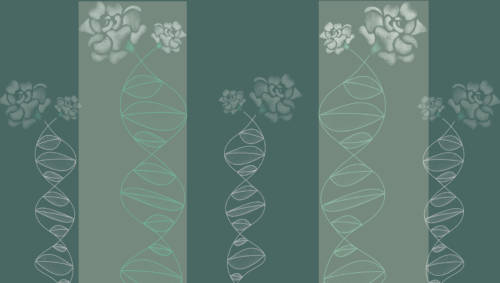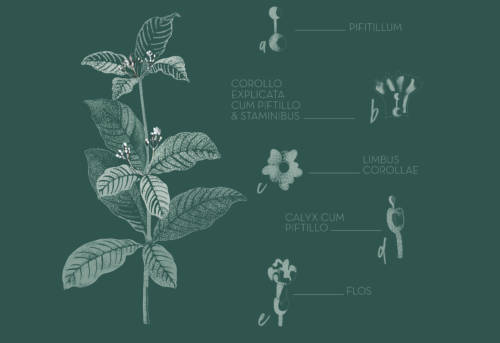
What’s In A Name? A Brief History of Plant Taxonomy
Plant names often have a historic feel to them, as if they have always been the same, existing in some ancient language all their own– no doubt a result of their Latin and Greek origins. In recent years, however, botanical classification and identification has been thrown into a state of turmoil as DNA and RNA have created a more clear-cut way to classify plants.

Worldwide, the first incursions into plant taxonomy (e.g. how we classify plants) occurred circa 3000 BCE, under the reign of Emperor Shen Nung (who is also credited with introducing acupuncture) in China. The emperor himself is suspected to have been the author of Divine Husbandman’s Materia Medica, which collected 365 remedies derived from various natural sources, including plants. However, the discoveries of the Eastern world did not arrive in Europe until the Middle Ages, and while Ancient Egypt is also considered to have dabbled in early plant systematics around 1500 BCE, the Western narrative traditionally traces the origins of plant taxonomy back to Ancient Greece.
Published sometime between 350 and 287 BC, Historia Plantarum by Theophrastus is the earliest-recognized surviving work on plants, which lists the name of some 480 specimens that Theophrastus identified according to their different features (based on his own critical observations). Theophrastus’s work was frequently drawn upon for many of the ensuing centuries, as it marked the first stone laid in the foundation of botany.

Almost 1400 years later, in 1200 AD, Albert Magnus provided the next great step in plant systematics when he noted the difference between monocots and dicots, today considered the two major groups in which all flowering plants can be classified. The ensuing 400 years contributed few advancements in the world of taxonomy, save some of the work born from the invention of the printing press in 1450, and pre-cursors to the microscope in the sixteenth century. Many herbalists– who with the advent of the printing press were now able to disseminate their work– made basic distinctions in their texts, like describing plants with flowers and those without, or noting differences in habitat, or even simply offering first-hand observations of what the plant in question looked like. All of this knowledge contributed to the growing body of research, spurring scientists to form a more orderly system to manage the discoveries.

The publication of Linnaeus’ Species Plantarum in 1753 is often pointed to as the true beginning of plant taxonomy. Unlike the works which preceded his, Linnaeus introduced a comprehensive system for naming plants. Key to his naming system were the short descriptions he provided of a plant’s defining features, which anyone in the field could read and match their species to. While the method was by no means perfect, it did help to bring order to a chaotic, untamed field. Linnaeus sorted plants through the taxonomic ranks, from kingdom all the way down to species. Classifications were based on the type of number of different parts (like stamens) and each species was given an epithet, used alongside the genus name. While Linnaeus intended this merely as a shorthand, it eventually became the primary means of referring to plants. Though not the first to use a binary naming system, Linnaeus was the first to do it on such a massive scale that his work established botany as its own discipline, rather than a fringe interest of medicine.
Darwin provided the next great leap in the narrative of plant taxonomy (though it was more of an upset than anything else), when he introduced his theory of evolution. While the connection between nomenclature and evolution was not immediately evident, as his theory gained traction, plant systematics became more and more rooted in looking for genetic differences and tracing relationships between them in this way (rather than simply relying visual cues, as Linnaeus had done).

Linnaeus’s binary nomenclature continued to evolve over the ensuing centuries, with various scientists weaving Linnaeus’s ideas into evolution so that plant systematics might better reflect reality. Today, taxonomy is a five kingdom system rather than a two kingdom system that organizes plants, but much of Linnaeus’s naming legacy remains intact.
The biggest divergence from Linnaeus’s system has been that researchers continue to pursue a natural (rather than artificial) classification system. (Linnaeus’s system is considered artificial because it is constructed, enforcing an order on plants that may not be true to their DNA.) Cladistics is now the most popular method to classify organisms because of its ability to predict— rather than simply note– what has already been seen, providing a more natural classification system. Unlike earlier systems, cladistics is based solely in evolution and coexists well with advances in DNA and RNA research.
The sequencing of plant genomes and all that has been revealed by plant DNA and RNA has created a kind of second revival of Darwin’s theory, with a similar world-altering effect. Many plants which were once comfortably sorted into families and genera have now been moved around, their “true” identity revealed through a sequence of amino acids.
But even DNA does not present an end-all to the discussion of how and where plants should be classified. More and more scientists are approaching plant taxonomy with a multidisciplinary approach, like incorporating morphology to balance DNA (though how much weight should be given to each remains a hotly contested subject). Like people, it seems that plants are more than the sum of their itemized parts– they cannot be so easily sorted. Far from the staid atmosphere it puts off, plant taxonomy– like the subject it studies– continues to evolve and grow.

































